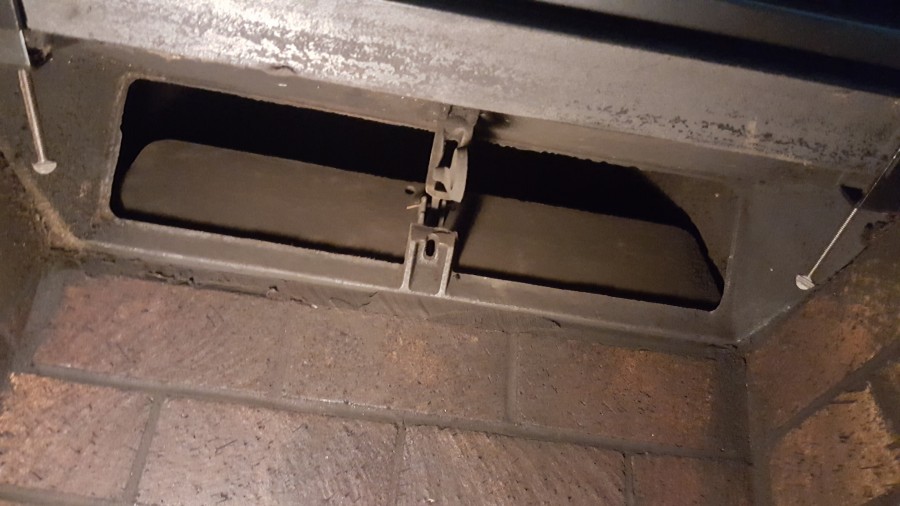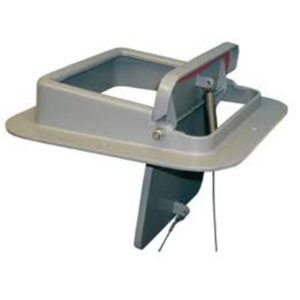Everything you need to know about chimney dampers
Ever since people brought fires inside the home to keep it warm and cook indoors, there has been a need to control the smoke and other emissions that fire produces. A hole in the roof was quickly recognized as less than ideal. Chimneys helped, but inventors like Benjamin Franklin and Benjamin Thompson(Count Rumford) saw the need for those chimneys to do a better job. The Franklin stove and Rumford fireplace are examples of the ingenuity that it takes to safely burn a fire inside. But when the fire is out, the chimney can let the home’s warm air outside just like it let the smoke out earlier. A chimney damper solves this problem and more.
What Is A Chimney Damper?
A chimney damper is a flap or door that can be manually controlled by the user to regulate the flow of air to the fire and prevent cold outside air from coming into the room when the fire is not lit. It functions like an interior lid for the chimney. Various types of dampers have been patented over the years but they all are designed to do the same job.
Chimney service companies like ours frequently see dampers that need to be replaced as part of repairing the chimney.

Throat Dampers
Throat Dampers are close to the firebox and often can be seen when you bend down and look at the top of your fireplace. These will either be open or closed by a lever or chain that can be used to move the damper to the desired position before lighting the fire or after it has gone out.
Chimney Cap Dampers
Chimney cap dampers are placed at the top of the chimney and normally are operated by pulling a long chain to open or close the top of the flue. This also helps keep debris and wildlife out of the chimney.
Inlet Dampers
Inlet Dampers are in the second category. They will usually allow the operator to adjust the amount of air coming into the hearth so that starting the fire is accelerated or a robust fire is slowed.
Stovepipe Dampers
Stovepipe Dampers are circular flaps that fit inside the stovepipe and can be moved by a handle that indicates the position of the flap. Perpendicular to the pipe, the circular flap is completely opened. Vertical to the pipe, it blocks the stovepipe from side to side. Adjusting the stovepipe damper is simple and provides an accurate draft for the need of the moment.
Inflatable Damper Seals
Inflatable damper seals are used when the fireplace is not active to completely block the flue. They are designed to be inflated and inserted into the chimney so that the indoor heat does not move up the chimney. Normally there is a tag hanging down to remind the inhabitants to remove it before a fire is built since it will melt and be a fire hazard.
What materials are chimney dampers made from?
With the exception of the inflatable damper seal, chimney dampers are designed to withstand heat. Dampers are usually made from cast iron or stainless steel. Some cap dampers could be cast aluminum because they are farther away from the fire. Cap dampers often have silicone seals at the edge to completely block the chimney. A few dampers have been made from ceramic materials.

Why do you need chimney damper
A chimney that does not have a damper is like a house that has a door open to the roof all the time. Without the damper working properly, cold air from outside can come into the room along with any wildlife that enters the chimney. Warm air goes up the chimney and heating bills rise. The dampers that can be used to adjust drafts allow the fire operator to adjust the amount of air the fire gets so that it will burn efficiently. A chimney damper in poor condition will do a poor job of keeping the chimney working well.
Common chimney damper problems
Because dampers are located where smoke and combustion byproducts collect, they will be affected by their environment. Here are some common problems that homeowners experience.
- Soot and creosote can create a buildup that affects the ability of the damper to operate.
- Moisture can make cast iron dampers rust and deteriorate.
- Excessive heat buildup can warp the original shape of a damper and keep it from functioning properly.
- Debris and wildlife nests can clog the damper.
- Previous owners may have removed the damper for reasons unknown.

Are there different levels of quality in chimney dampers?
There are indeed different levels of quality in chimney dampers, just as there are in all manufacturing. One of the important things to recognize is that the damper must be appropriate for its location and the design of the entire chimney structure. An expensive, well-constructed chimney damper in the wrong setting is not going to work as well as a lower-quality damper that is correct in its application. This is why it is important to get expert advice from a certified chimney specialist.
- Your chimney and hearth appliance need to be inspected and possibly cleaned every year for safety’s sake.
- Your damper is part of this inspection.
- If your damper is not working right, an expert can offer safe suggested solutions in a variety of price ranges.
Things to remember about chimney dampers
Some people use their fireplace even if it is missing a damper and see no reason why they should have one. Others opened the damper to use the fireplace one winter and never bothered to shut it again. But dampers are important parts of your chimney for good reason.
- Your chimney damper is like a door to your roof through the chimney.
- This door should be open when using the fireplace and closed when there is no fire.
- If your damper is not shutting or is missing, the fireplace can be safely used if it passes a chimney inspection.
- Once the fire is out, put a board across the fireplace or use an inflatable chimney damper seal to keep the indoor air from going outside. This is more cumbersome but it will act as a damper until you can have a new one in place.
- Chimney dampers should be close during the summer. Learn the reason here.
